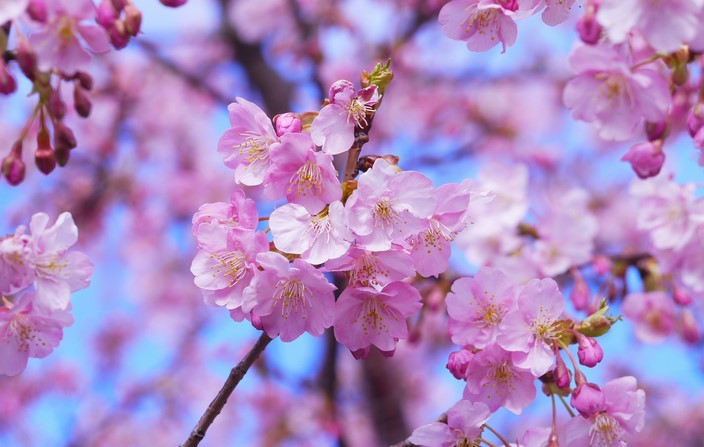
Korea is a country steeped in culture and tradition, and its flowers are no exception. From the national flower of Korea, the mugunghwa, to the cherry blossom, Korean flowers have a long and rich history of symbolism and meaning. In this article, we will explore the symbolism of Korean flowers and their importance in Korean culture. We will look at the traditional meanings of some of the most popular flowers in Korea, as well as the modern interpretations of these symbols. We will also discuss the importance of flowers in Korean weddings and other special occasions. Finally, we will look at the ways in which flowers are used to express emotions and feelings in Korea.
A Guide to the Most Popular Korean Flowers and Their Symbolic Meanings
Flowers have long been used to express emotions and convey messages in Korea. They are often used to express love, appreciation, and respect. In Korean culture, certain flowers have specific meanings and are used to convey specific messages. This guide will provide an overview of the most popular Korean flowers and their symbolic meanings.
The Chrysanthemum is one of the most popular flowers in Korea. It symbolizes longevity, joy, and optimism. It is often used to express admiration and respect for someone’s achievements.
The Rose is a symbol of love and romance. It is often used to express feelings of love and admiration for someone. Red roses are the most popular, but pink and white roses are also used to express different emotions.
The Lotus is a symbol of purity and enlightenment. It is often used to express a wish for spiritual growth and enlightenment.
The Plum Blossom is a symbol of resilience and perseverance. It is often used to express admiration for someone’s strength and courage.
The Camellia is a symbol of beauty and grace. It is often used to express admiration for someone’s beauty and grace.
The Magnolia is a symbol of purity and innocence. It is often used to express admiration for someone’s innocence and purity.
The Peony is a symbol of wealth and prosperity. It is often used to express wishes for wealth and prosperity.
The Azalea is a symbol of passion and enthusiasm. It is often used to express admiration for someone’s passion and enthusiasm.
The Hibiscus is a symbol of joy and happiness. It is often used to express wishes for joy and happiness.
The Orchid is a symbol of elegance and refinement. It is often used to express admiration for someone’s elegance and refinement.
These are some of the most popular Korean flowers and their symbolic meanings. By understanding the symbolic meanings of these flowers, you can express your feelings and wishes in a meaningful way.
Exploring the History and Cultural Significance of Korean Flower Arrangements
Korean flower arrangements, known as han-gah, have a long and rich history in Korean culture. Han-gah is a traditional art form that has been practiced for centuries, and it is still popular today. The practice of han-gah is deeply rooted in the Confucian philosophy of harmony and balance. It is believed that the arrangement of flowers in a certain way can bring peace and harmony to a space.
Han-gah is a highly symbolic art form. Each flower has its own meaning, and the arrangement of the flowers is meant to convey a certain message. For example, a bouquet of white chrysanthemums is often used to express sympathy and mourning. Similarly, a bouquet of pink roses is often used to express love and appreciation. The colors, shapes, and sizes of the flowers are all carefully chosen to create a meaningful arrangement.
Han-gah is also closely associated with the Korean concept of jeong, which is a deep emotional bond between people. Jeong is often expressed through the act of giving flowers. By giving someone a han-gah, the giver is expressing their jeong and showing their appreciation for the recipient.
Han-gah is also closely linked to the Korean concept of han, which is a feeling of sorrow and oppression. Han is often expressed through the act of arranging flowers in a certain way. By arranging flowers in a certain way, the arranger is expressing their han and showing their sorrow.
Han-gah is an important part of Korean culture and has been practiced for centuries. It is a highly symbolic art form that conveys a variety of messages and emotions. It is closely linked to the concepts of jeong and han, and it is a powerful way to express one’s feelings. Han-gah is a beautiful and meaningful way to show appreciation and express sorrow.Korean flower symbolism is an important part of the culture and history of Korea. From the national flower of Korea, the mugunghwa, to the many other flowers that are used to express love, respect, and admiration, flowers have a deep meaning in Korean culture. Flowers are used to express emotions, to celebrate special occasions, and to honor the dead. They are also used to decorate homes and gardens, and to bring beauty and joy to everyday life. By exploring the symbolism of blossoms in Korea, we can gain a deeper understanding of the culture and its people.